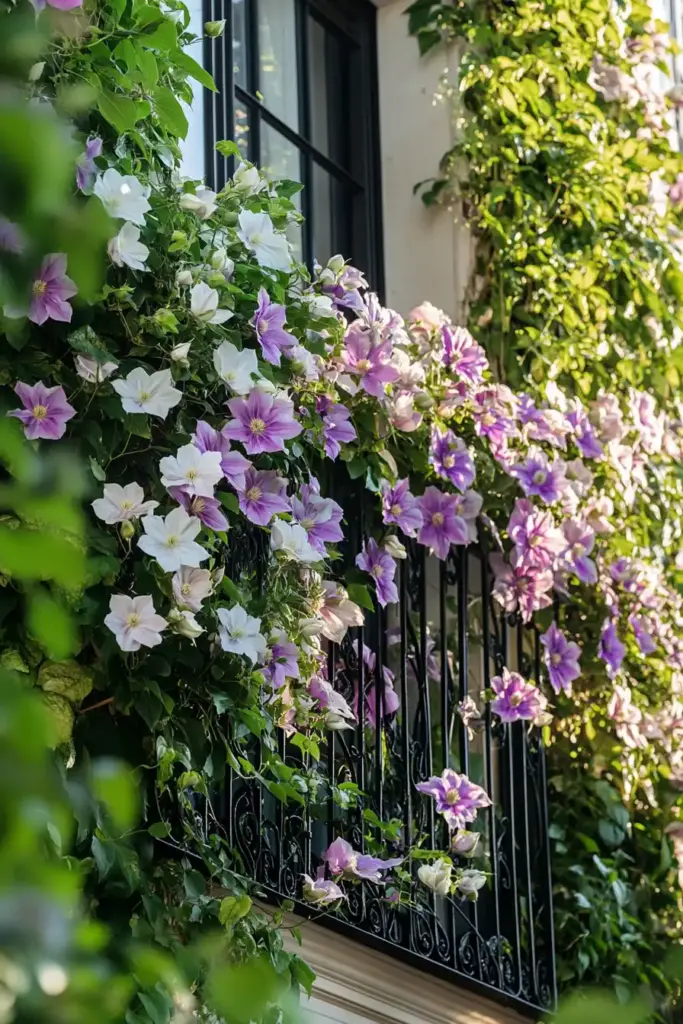Imagine escaping into a cool corner of your garden on a warm summer afternoon—framed by lush foliage and vibrant blooms, all without a single sunbeam in sight. If this sounds like your dream garden setup, flowering vines for shade could be your new secret weapon.
Whether you’re working with a shaded pergola, a dim trellis, or a low-light fence line, there’s a climbing plant out there ready to transform that space with color, fragrance, and personality. In fact, nature offers a wide variety of shade-tolerant flowering vines that thrive even where direct sunlight is scarce. These plants don’t just survive in the shadows—they flourish, often boasting lush foliage and blooms that rival their sun-loving counterparts.
Before we dive into the best shade-loving vines, it’s helpful to understand the key difference between partial shade and full shade—because this can make or break your planting success.
🌤 Understanding Light: Full Shade vs Partial Shade
Before planting your flowering vines, it’s crucial to understand how much light your chosen garden spot really gets. Many gardeners overestimate how “shady” their space is, which can lead to planting the wrong varieties or missing out on vibrant growers that thrive in more light than expected.
☁️ Full Shade vs Partial Shade
- Full Shade doesn’t mean absolute darkness—it means less than 3 hours of bright, indirect light per day. Think of areas beneath dense tree canopies or along north-facing walls.
- Partial Shade is much more common. These spots get between 3 to 6 hours of indirect or filtered light daily. Many areas considered “shady” in the garden actually fall into this category.
The good news? Most flowering vines for shade prefer partial shade, which means your garden likely has several suitable spots to plant. And thanks to the adaptable nature of these plants, even areas with dappled light or late-day sun can host thriving, blooming climbers.
🌸 Top 20 Flowering Vines for Shade
Let’s dive into some of the most beautiful, shade-friendly flowering vines that can add charm, structure, and vibrant color to those low-light corners of your garden. These selections are based on their hardiness, beauty, adaptability, and bloom time—each perfect for a partially shaded trellis, pergola, arbor, or fence.
1. Chinese Wisteria (Wisteria sinensis)
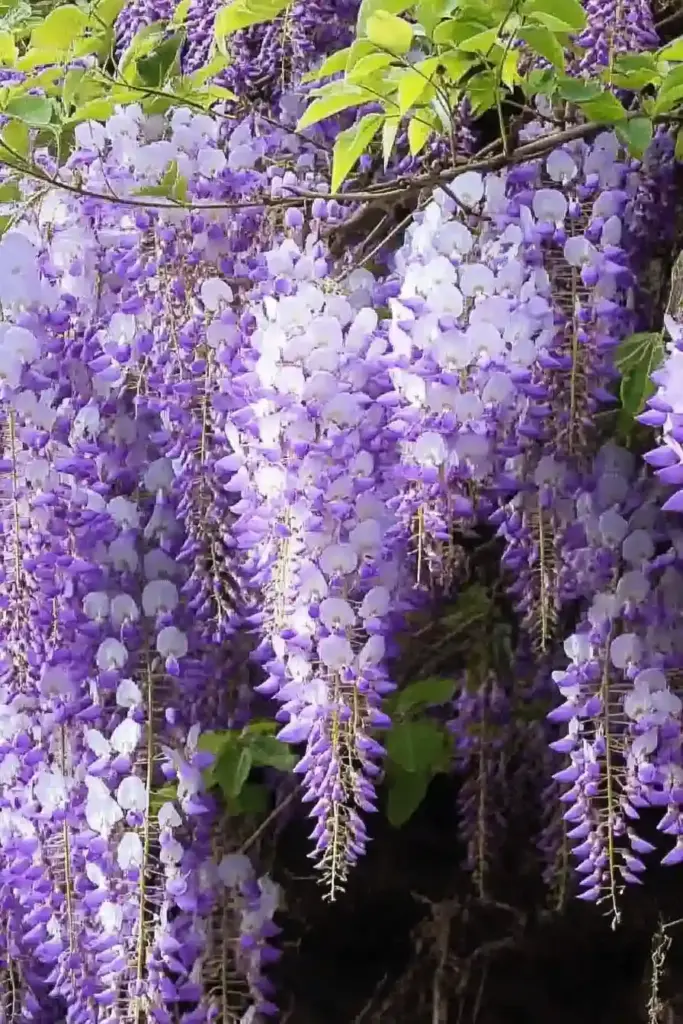
A graceful classic, Chinese wisteria brings cascading lavender blooms and a sweet scent to shady spots. While many wisterias demand full sun, this variety can thrive in partial shade—often growing beneath tree canopies in the wild.
- USDA Zones: 5–9
- Light: Partial shade to full sun
- Bloom Time: Late spring to early summer
- Size: Up to 40 ft tall
- Soil: Well-drained, adaptable (loam, clay, chalk, sand)
Pro Tip: Chinese wisteria twines clockwise, unlike its Japanese cousin which goes counter-clockwise. Set your supports accordingly!
2. Chocolate Vine (Akebia quinata)
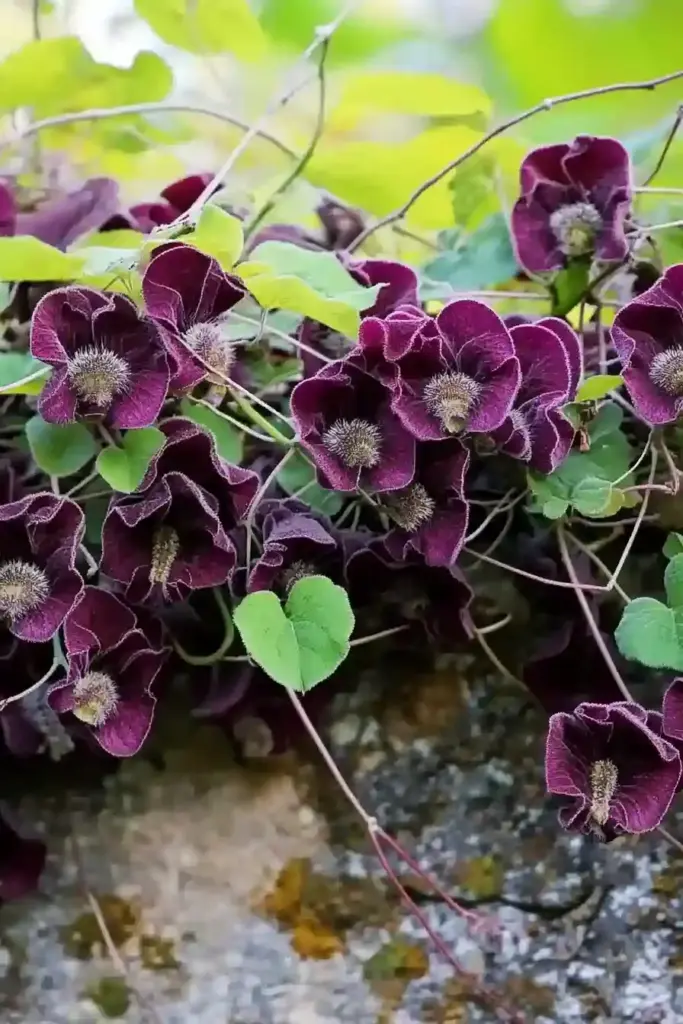
This fast-growing semi-evergreen climber can handle full shade—a rare trait among flowering vines. Its unique dark purple flowers smell like vanilla-chocolate and pair beautifully with its lush, clover-like leaves.
- USDA Zones: 5–9
- Light: Full shade to full sun
- Bloom Time: Mid to late spring
- Size: Up to 40 ft
- Soil: Moist, well-drained; tolerates many soil types
Did You Know? It’s a Royal Horticultural Society Award of Garden Merit winner!
3. Clematis (Clematis spp.)
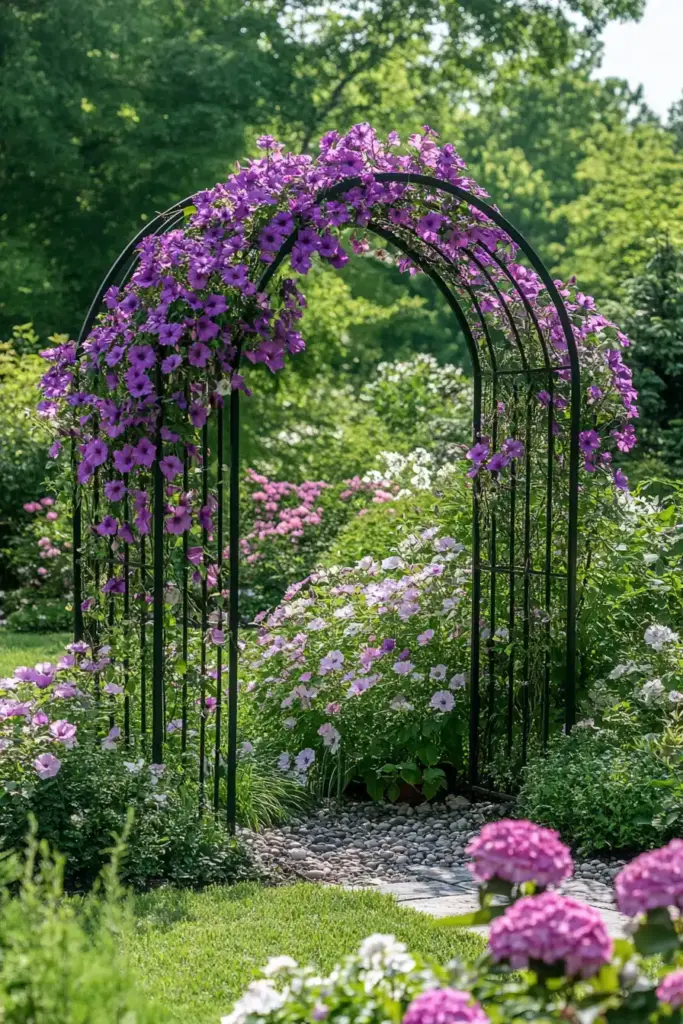
An all-time garden favorite, clematis vines love cool roots and warm tops, making partial shade perfect for them. Their oversized, showy blooms range from white to deep purple and last from spring to fall depending on the variety.
- USDA Zones: 4–9 (varies by species)
- Light: Partial shade to full sun
- Bloom Time: Spring to fall
- Size: Up to 8 ft
- Soil: Well-drained, neutral to slightly alkaline
Gardener’s Tip: Mulch at the base to keep roots cool and moist.
4. Dipladenia (Mandevilla boliviensis)
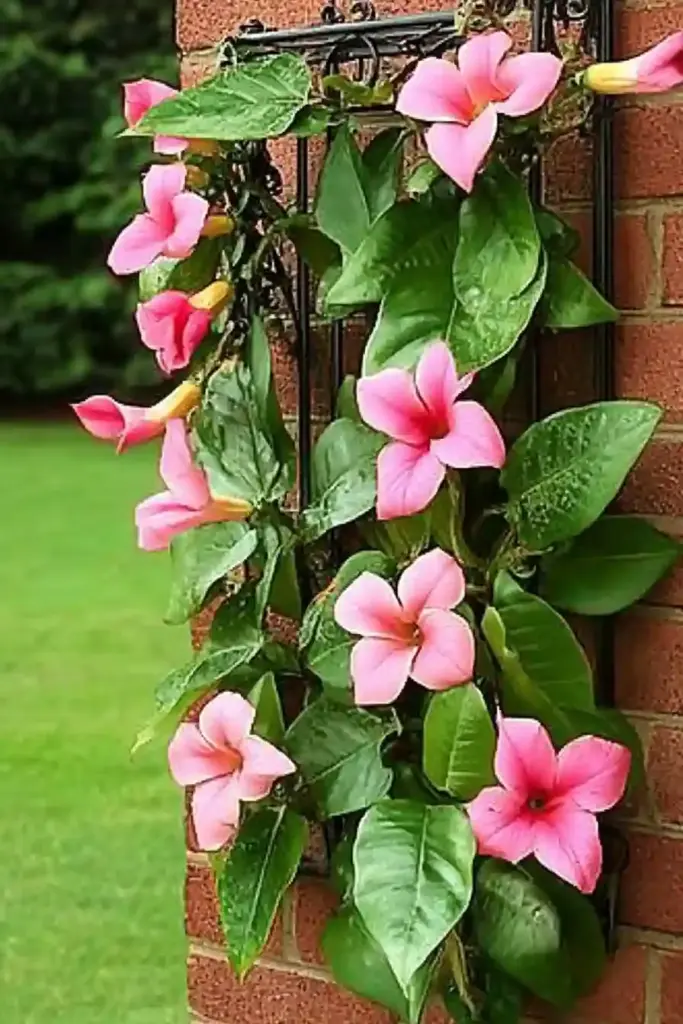
With its tropical appeal and lush, glossy leaves, dipladenia is a showstopper. Its vivid red or white trumpet-shaped flowers bloom even in partial shade, and it’s perfect for containers or hanging baskets.
- USDA Zones: 10–11
- Light: Partial shade to full sun
- Bloom Time: Late spring through summer
- Size: 3–10 ft
- Soil: Humid, well-drained loam
Ideal For: Tropical gardens or brightening up shaded patios.
5. Trumpet Vine (Campsis radicans)
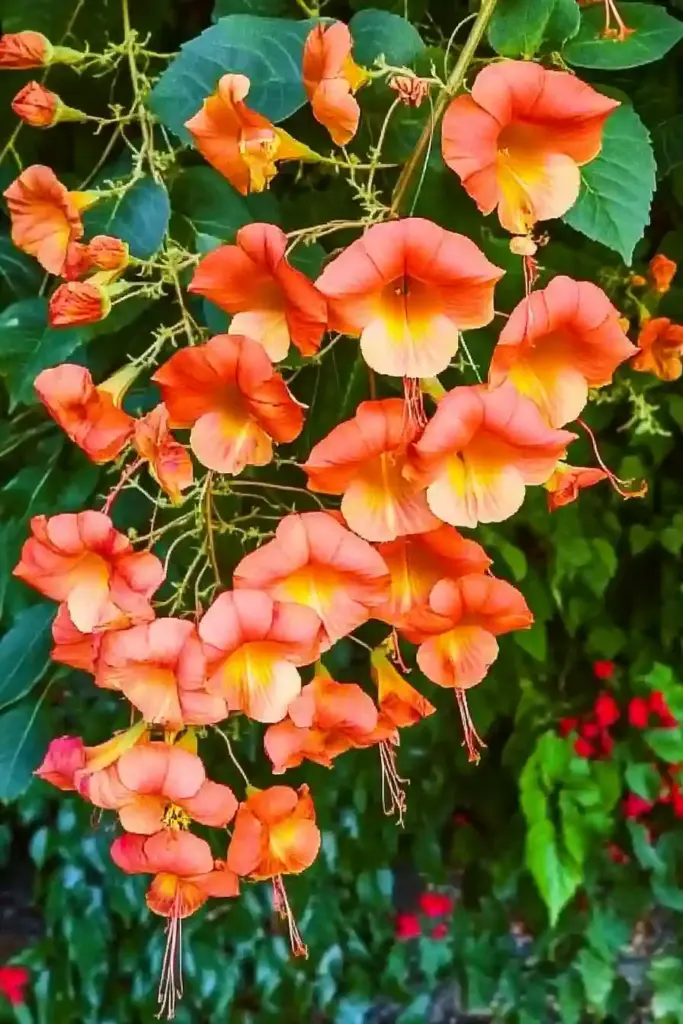
Bring bold color to darker corners with the fiery orange, red, or yellow blooms of trumpet vine. This vigorous grower attracts hummingbirds and thrives in partial shade, though it can be aggressive—so keep it trimmed!
- USDA Zones: 5–9
- Light: Partial shade to full sun
- Bloom Time: Summer
- Size: 20–40 ft
- Soil: Well-drained, adaptable
6. Spurred Butterfly Pea (Centrosema virginianum)
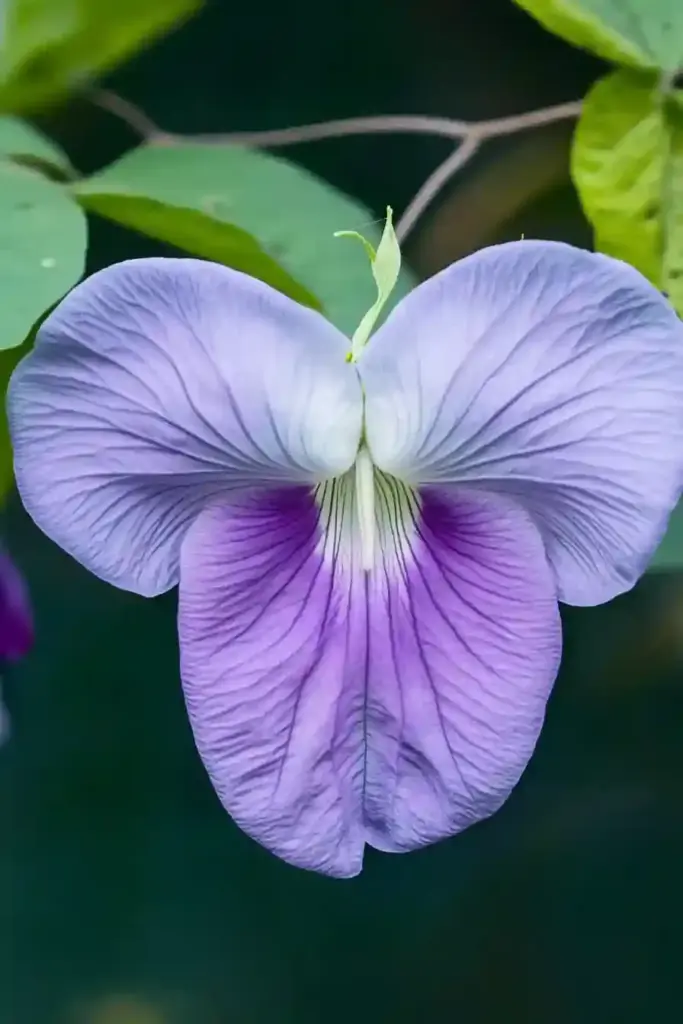
This low-maintenance, fast-growing vine offers lavender, pea-like blooms that dangle from graceful, vine-covered foliage. A member of the legume family, it’s ideal for informal or cottage-style gardens and even doubles as a ground cover.
- USDA Zones: 5–9
- Light: Partial shade to full sun
- Bloom Time: Summer
- Size: Up to 6 ft tall
- Soil: Well-drained loam or sandy loam; drought-tolerant
Bonus: It’s great for pollinators and requires very little care once established.
7. Cross Vine (Bignonia capreolata)
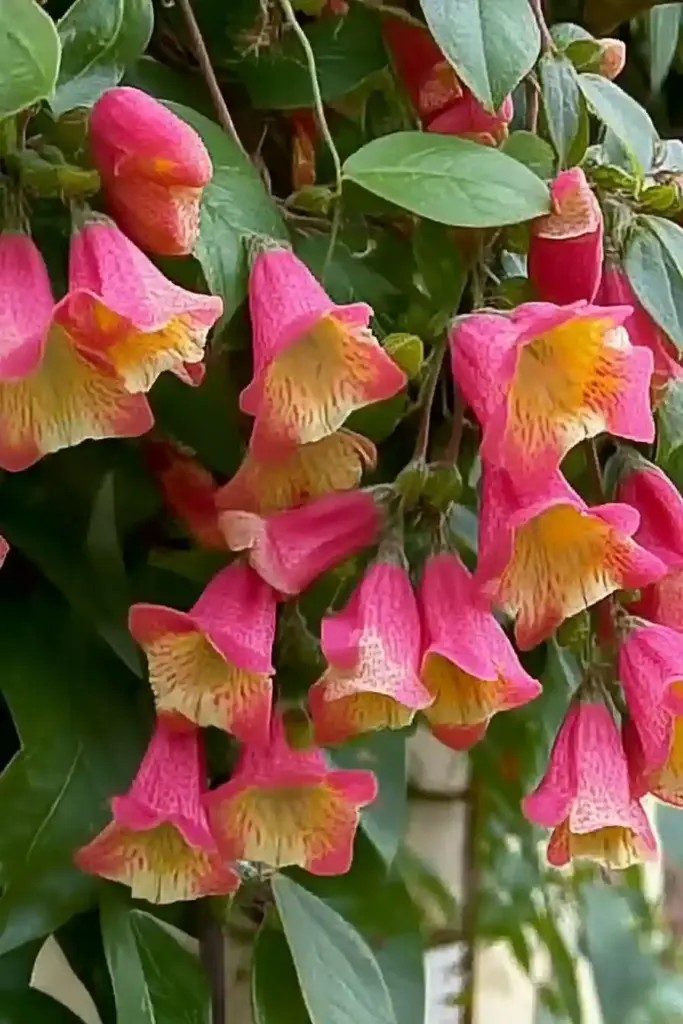
A lesser-known gem, cross vine is a woody climber with eye-catching, trumpet-shaped flowers in fiery tones of red, orange, and yellow. Its dense foliage makes it excellent for disguising unsightly walls or fences in part shade.
- USDA Zones: 6–9
- Light: Partial shade to full sun
- Bloom Time: Mid-spring to late summer
- Size: 30–50 ft tall
- Soil: Well-drained; adaptable to most soil types
Best Use: Covering large structures where quick coverage is needed.
8. American Groundnut (Apios americana)
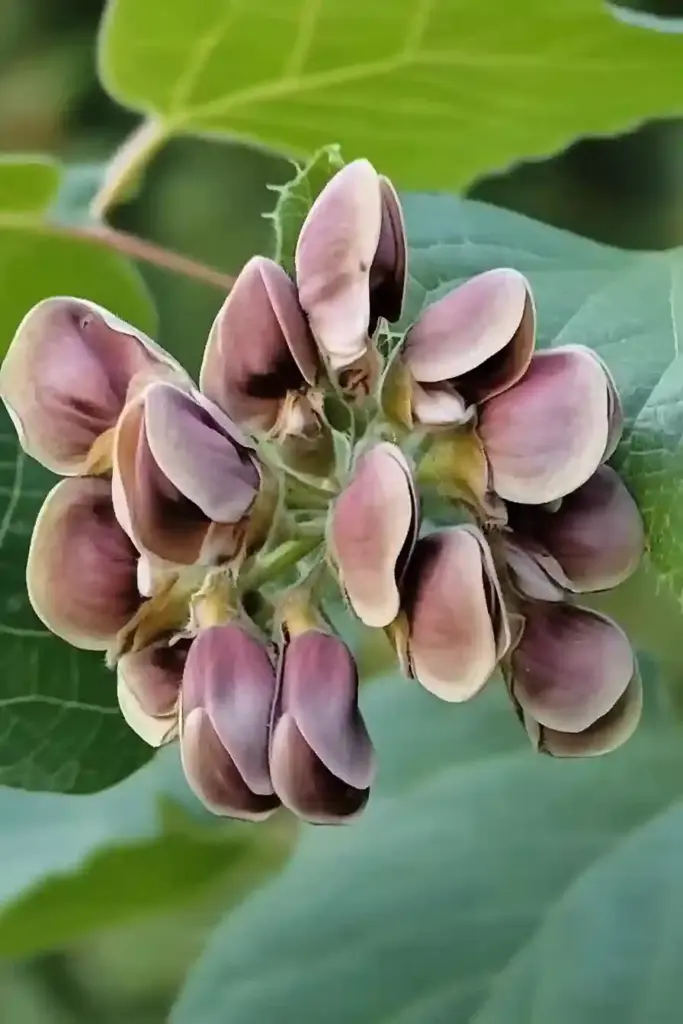
Looking for a dual-purpose vine? This nitrogen-fixing plant offers fragrant pink-brown flowers and edible tubers rich in protein, iron, and calcium. It’s a great fit for edible landscapes and permaculture gardens.
- USDA Zones: 4–9
- Light: Partial shade to full sun
- Bloom Time: Summer
- Size: Up to 15 ft tall
- Soil: Consistently moist, well-drained soil
Fun Fact: It was a staple food crop for many Native American tribes.
9. Virgin’s Bower (Clematis virginiana)
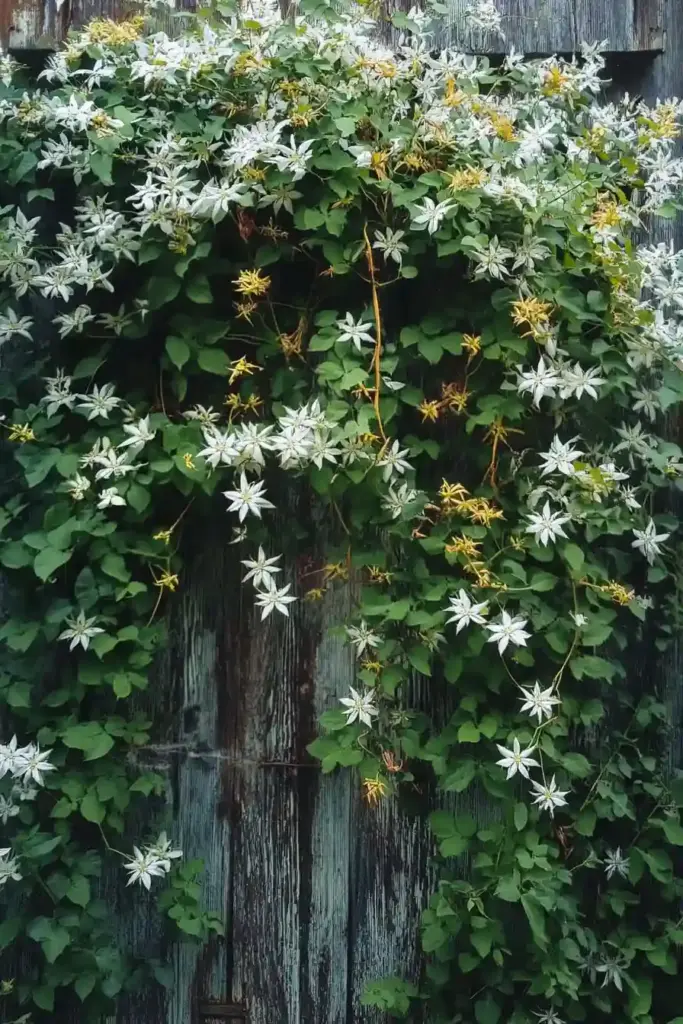
Resembling a bridal veil, this vine fills with tiny star-shaped white blooms that smell faintly sweet. In winter, its fluffy seed heads add visual interest. It’s one of the few native clematis options that thrives in part shade.
- USDA Zones: 3–8
- Light: Partial shade to full sun
- Bloom Time: Summer (flowers), Winter (seed heads)
- Size: 10–20 ft
- Soil: Moist, well-drained; neutral to slightly alkaline
Tip: Excellent for creating a romantic, woodland-style garden vibe.
10. Dutchman’s Pipe (Aristolochia macrophylla)
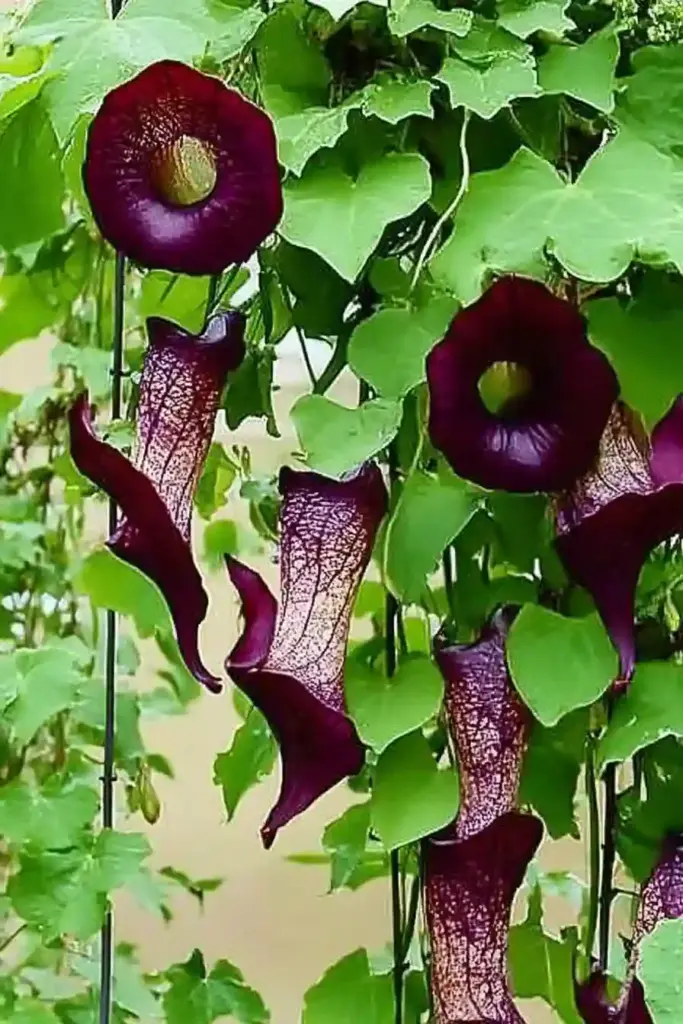
Looking for something unusual? Dutchman’s pipe delivers with its huge heart-shaped leaves and alien-like, curved flowers that resemble old-fashioned smoking pipes. A bold statement vine for shady spaces.
- USDA Zones: 5–8
- Light: Partial shade (prefers cooler climates)
- Bloom Time: Late spring to early summer
- Size: 15–30 ft tall
- Soil: Any well-drained soil; adaptable to various pH levels
Great For: Adding drama and structure to arbors or pergolas.
11. Swamp Leatherflower (Clematis crispa)
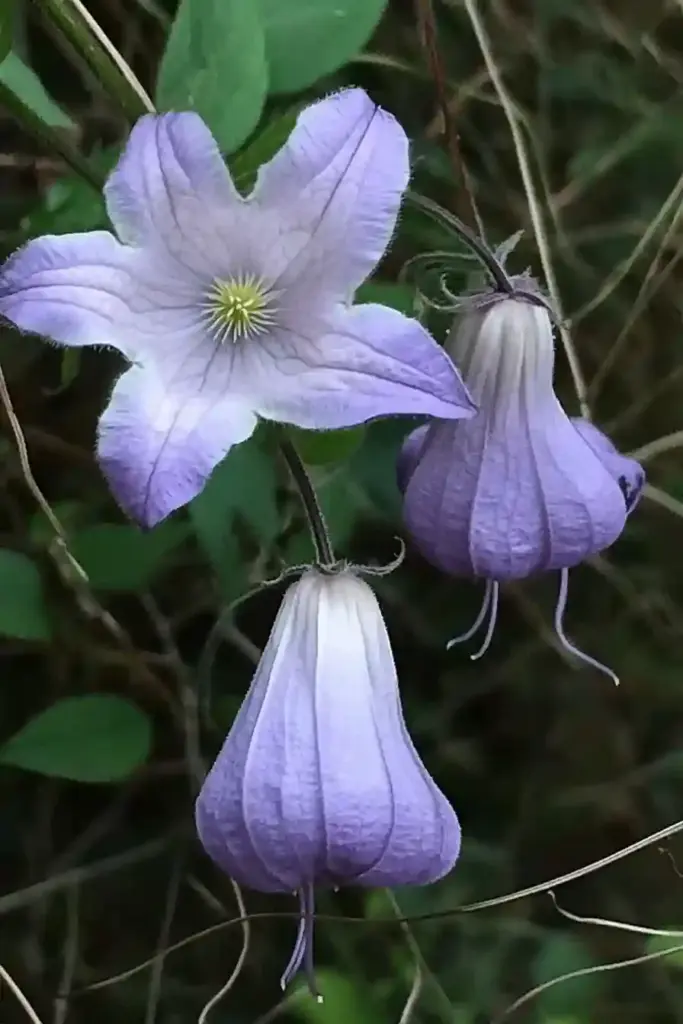
Nicknamed “blue jasmine,” this native clematis sports nodding, bell-shaped flowers in violet-blue hues. Despite their modest size, these blooms are fragrant and plentiful, blooming from spring to frost.
- USDA Zones: 6–9
- Light: Partial shade to full sun
- Bloom Time: Early spring through fall
- Size: Up to 10 ft
- Soil: Humid, well-drained soil; slightly acidic to neutral
Wildlife Bonus: Beloved by pollinators—especially bees and butterflies.
12. Common Hop (Humulus lupulus)
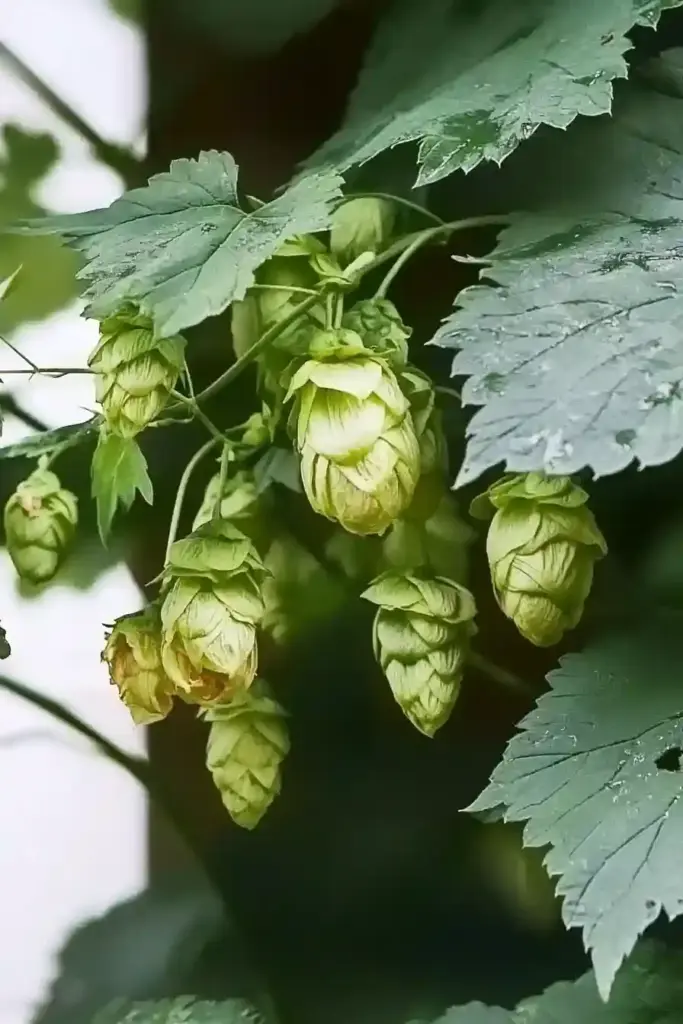
Best known for its use in brewing beer, hop vines are fast growers with feathery green cones that emit a light, earthy fragrance. They’re ideal for covering fences or arbors in record time—even in dappled shade.
- USDA Zones: 4–8
- Light: Partial shade to full sun
- Bloom Time: Summer to fall
- Size: Up to 20 ft
- Soil: Moist, well-drained sandy or loamy soil
Perfect For: Rustic gardens or functional edible landscapes.
13. Prairie Rose (Rosa setigera)
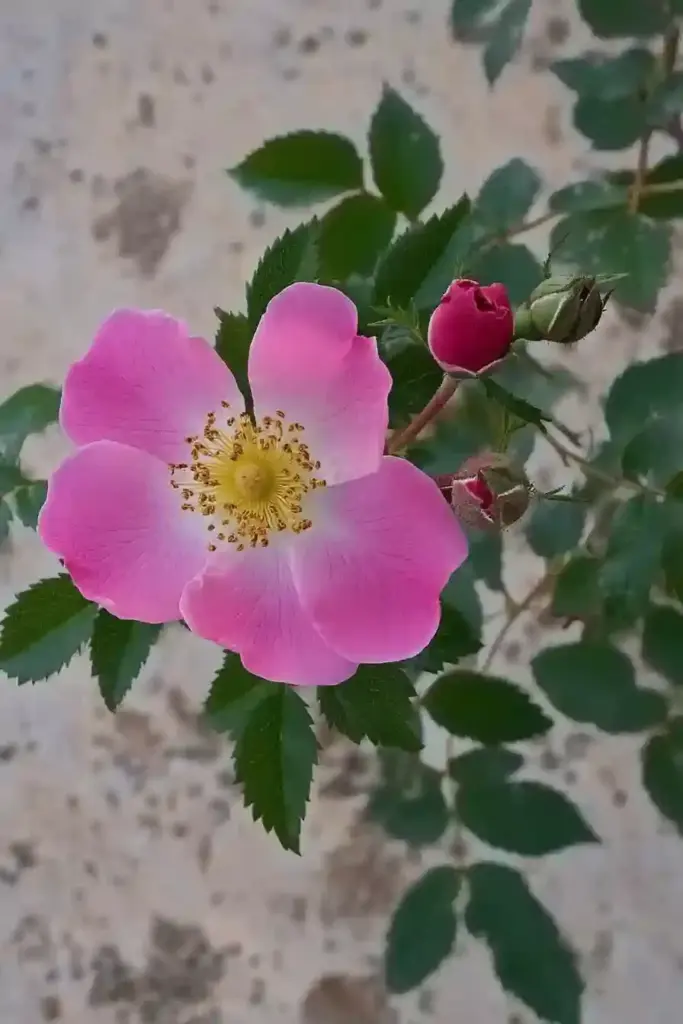
Yes—you can grow roses in the shade! Prairie rose is a native climber with flat, fragrant flowers in magenta to pale pink, accented by golden centers. It’s low-maintenance and attracts birds with its red rose hips in fall.
- USDA Zones: 5–8
- Light: Partial shade to full sun
- Bloom Time: Late spring to early summer
- Size: 6–12 ft tall
- Soil: Moist, well-drained loam or clay; slightly acidic to neutral
Ideal For: Cottage gardens and naturalized landscapes.
14. Carolina Jasmine (Gelsemium sempervirens)
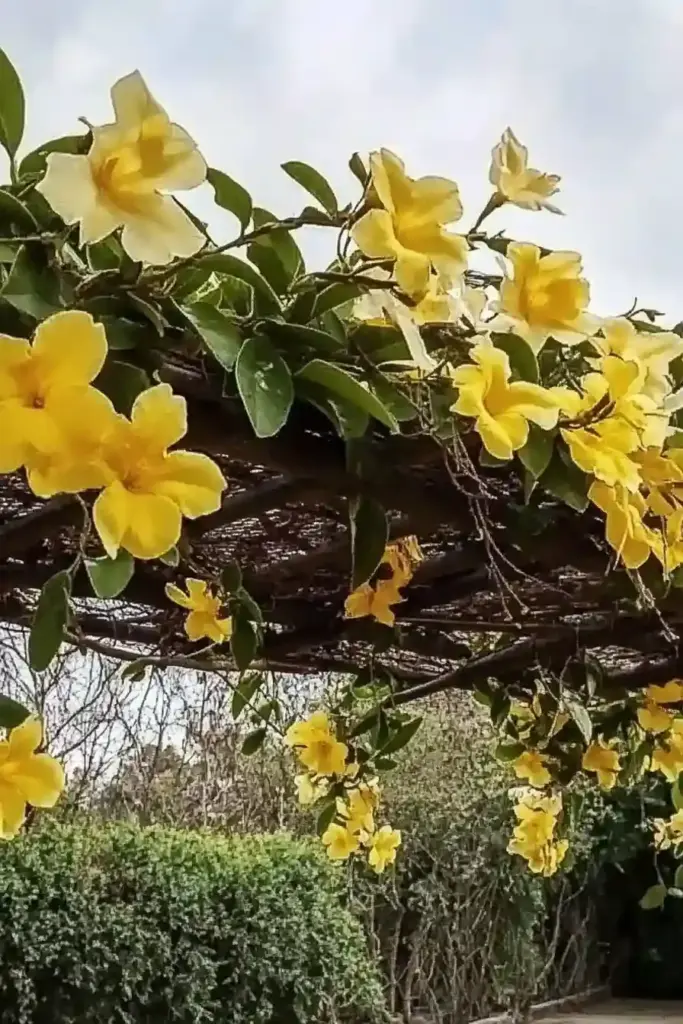
This vine delivers a burst of yellow cheer in the darkest months, blooming from late winter through spring. Its buttery trumpet flowers are wonderfully fragrant, and it’s a low-fuss climber for warm climates.
- USDA Zones: 7–10
- Light: Partial shade to full sun
- Bloom Time: Winter through spring
- Size: 10–20 ft
- Soil: Well-drained; thrives in most soil types
Not a true jasmine, but every bit as fragrant and lovely!
15. Honeysuckle (Lonicera japonica)
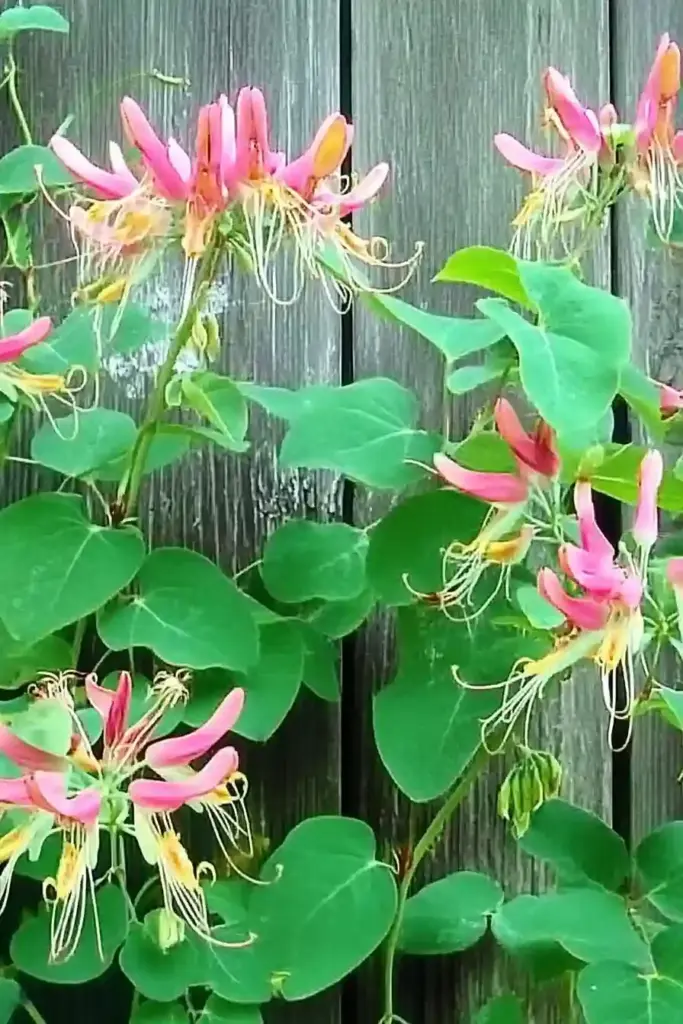
This vigorous vine is a shade garden classic. Its tubular, sweet-smelling blooms in cream, pink, orange, or red are magnets for hummingbirds and butterflies. The dense foliage is perfect for privacy or backdrop coverage.
- USDA Zones: 4–9
- Light: Partial shade to full sun
- Bloom Time: Spring to late summer
- Size: 15–30 ft
- Soil: Well-drained; suitable for loam, chalk, or sandy soil
Caution: It can spread quickly, so pruning is key in small spaces.
16. Atlantic Pigeon Wing (Clitoria mariana)
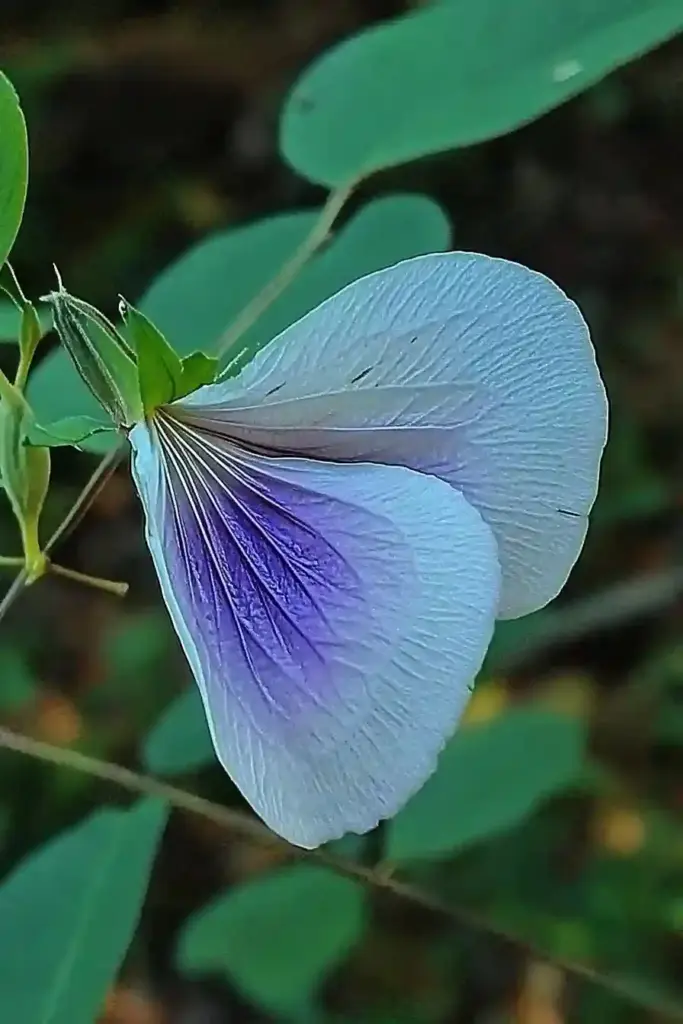
This compact climber is ideal for small trellises or tight corners. Its violet-pink blooms have a bold, heart-shaped petal that stands out beautifully against dainty, three-pinnate leaves. A lovely native vine that adds a soft, romantic touch.
- USDA Zones: 5–9
- Light: Partial shade to full sun
- Bloom Time: Summer
- Size: 4 ft tall
- Soil: Sandy or loamy soil; prefers slightly acidic to neutral pH
Great Choice For: Smaller gardens or container planting.
17. Wild Potato Vine (Ipomoea pandurata)
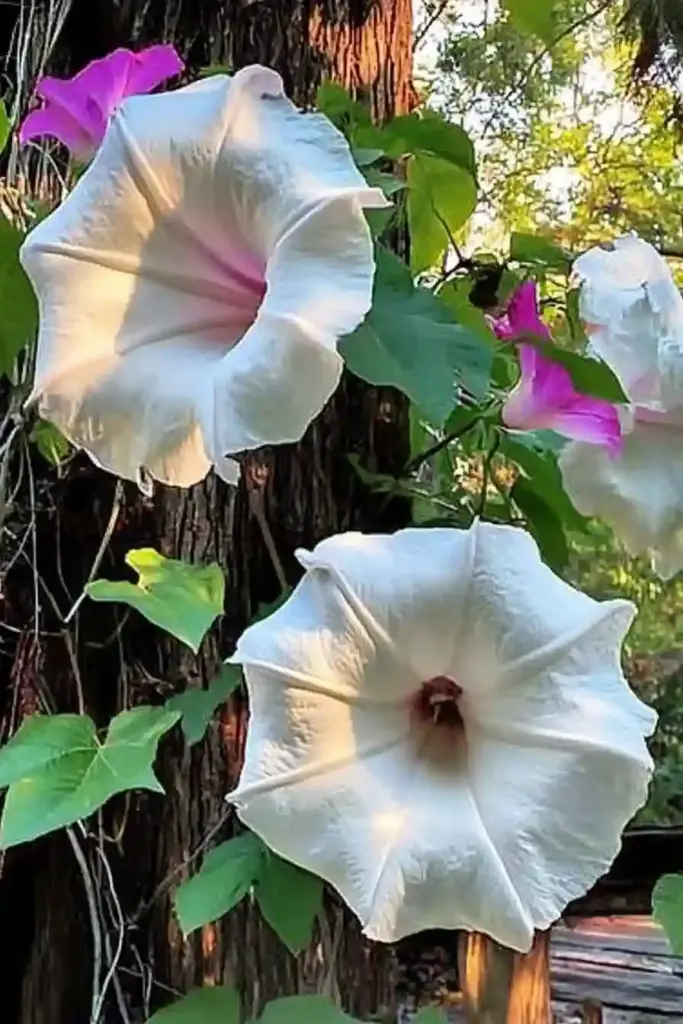
A cousin of morning glory, this native climber delivers dramatic, white trumpet-shaped flowers with magenta centers. It’s also edible—its underground tubers are where it gets the name “wild potato.”
- USDA Zones: 3–8
- Light: Partial shade to full sun
- Bloom Time: Late spring to early summer
- Size: 15–30 ft
- Soil: Well-drained and drought-tolerant; adaptable pH
Tip: Excellent for covering unsightly fences with minimal care.
18. Butterfly Vine (Mascagnia macroptera)
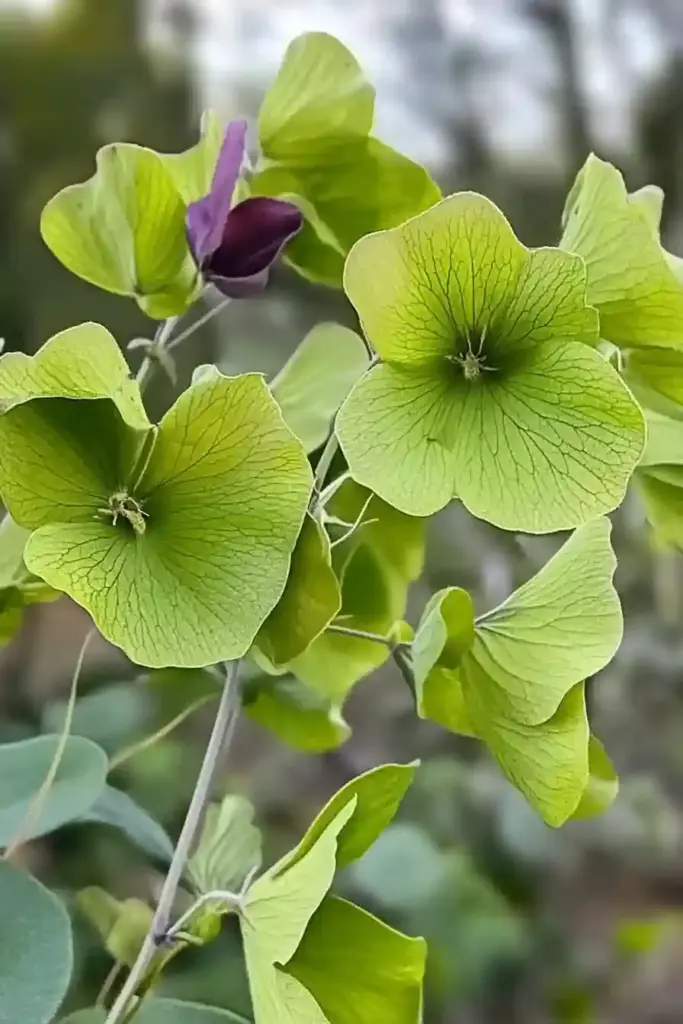
This show-stopper features canary-yellow flowers followed by unique, coppery seed pods that resemble butterfly wings. With its tropical foliage and unusual blooms, it’s perfect for adding visual intrigue to shaded entryways or trellises.
- USDA Zones: 8–10
- Light: Partial shade
- Bloom Time: Spring
- Size: Up to 20 ft
- Soil: Well-drained loam or sandy loam; mildly acidic to mildly alkaline
Highlight: A conversation starter and pollinator magnet!
19. Star Jasmine (Trachelospermum jasminoides)
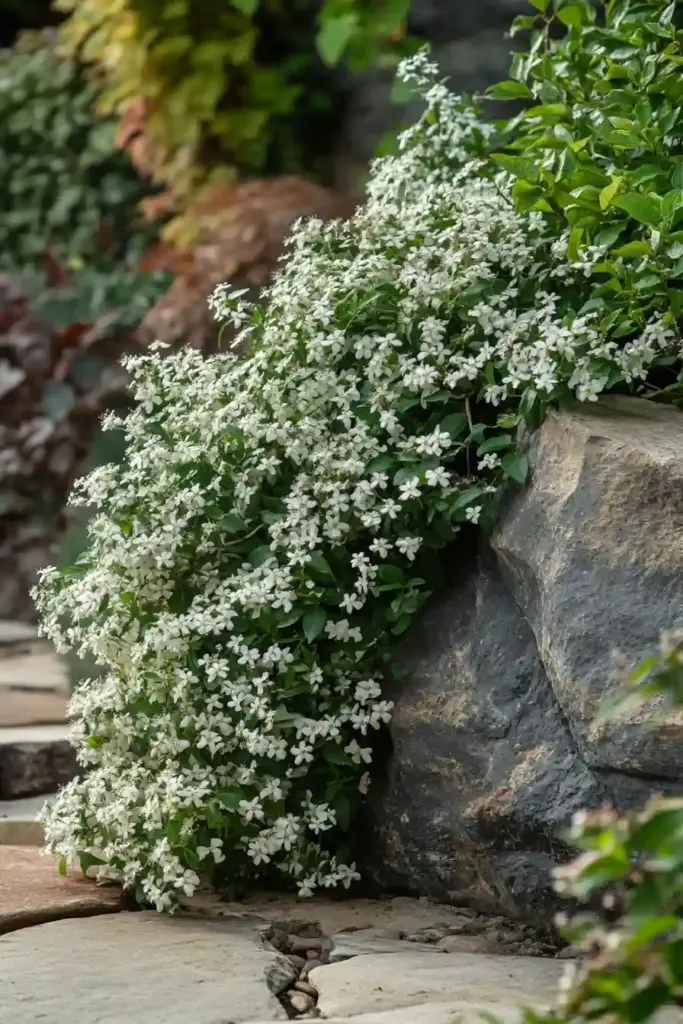
Beloved for its heavenly fragrance and glossy evergreen foliage, star jasmine offers star-shaped white flowers that cover walls, fences, and pergolas in early to mid-summer. A must-have in warm-climate gardens.
- USDA Zones: 7–11
- Light: Partial shade to full sun
- Bloom Time: Summer (with occasional reblooms)
- Size: Up to 30 ft tall
- Soil: Well-drained loam, chalk, or sand; slightly acidic to slightly alkaline
Best Use: Covering pergolas or providing shade on patios.
20. Sweet Peas (Lathyrus spp.)
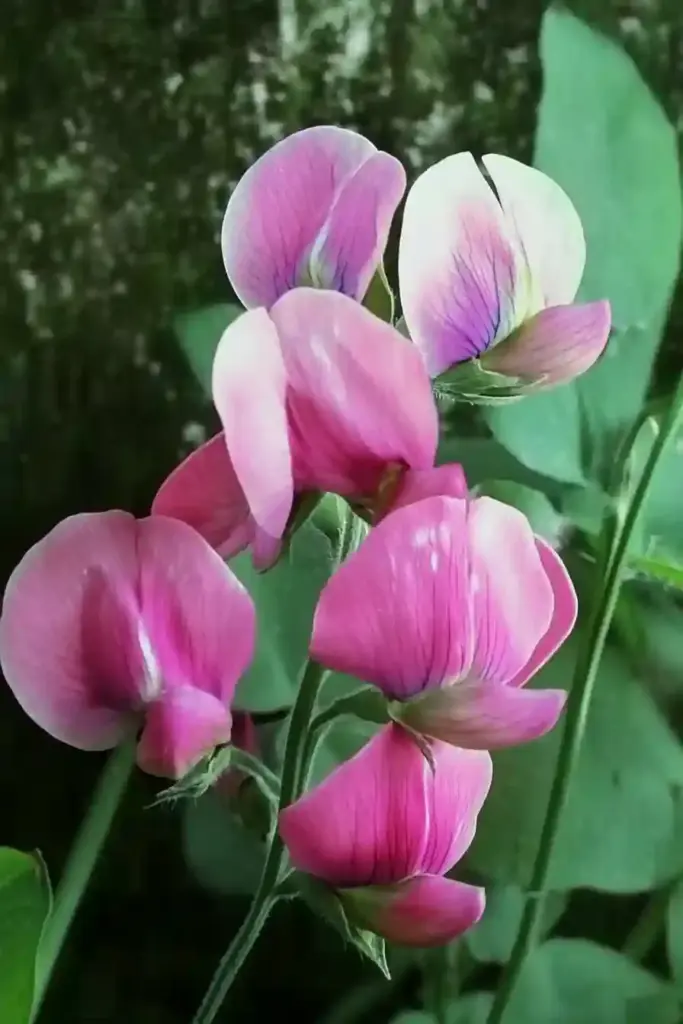
If you want instant color and fragrance, sweet peas are your go-to. These fast-growing annuals offer months of blooms in every shade imaginable and are incredibly easy to grow—even in partial shade.
- USDA Zones: 2–11
- Light: Partial shade to full sun
- Bloom Time: Spring to first frost
- Size: Up to 8 ft
- Soil: Well-drained loam or sandy loam; slightly acidic to slightly alkaline
Bonus: Ideal for gardeners on a budget or tight timeline.
🌼 Conclusion: Let Shade Bloom Beautifully
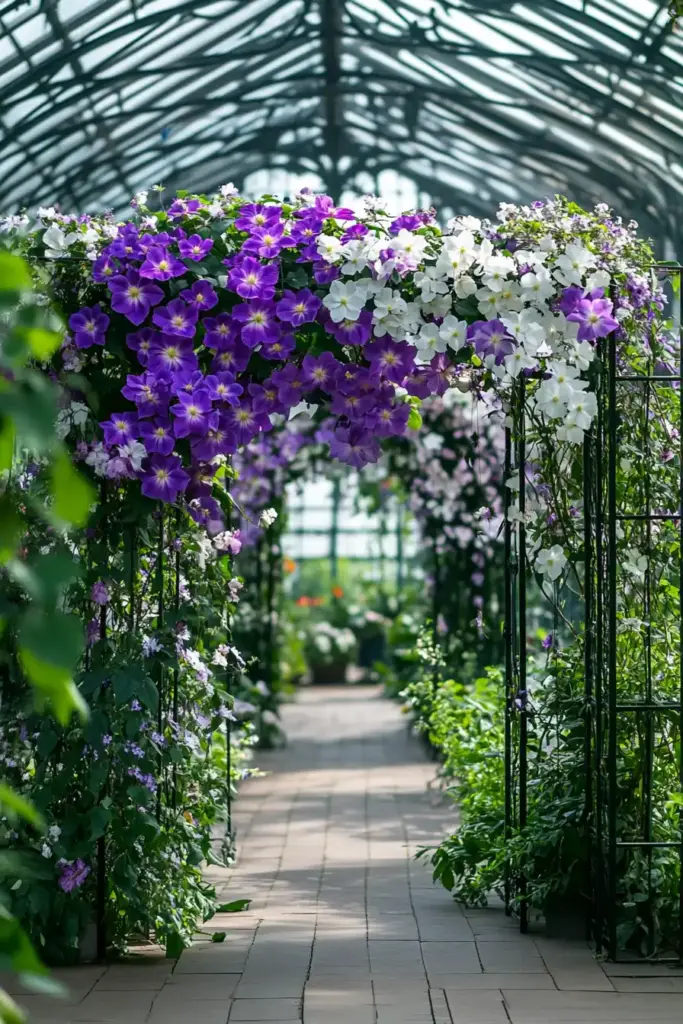
Just because your garden has shady spots doesn’t mean you have to sacrifice color, fragrance, or vibrancy. With the right selection of flowering vines for shade, those dim corners can transform into lush, blooming retreats that feel like secret garden sanctuaries.
From the dramatic flair of Dutchman’s pipe to the romantic charm of clematis and the cheerful simplicity of sweet peas, there’s a vine for every space and style. Whether you’re designing a shaded pergola, wrapping a trellis, or camouflaging a fence, these climbers provide not just beauty—but structure, scent, and even wildlife benefits.
So don’t let the lack of sunlight limit your garden dreams. Plant smart, choose the right varieties, and let your shady areas shine with nature’s vertical wonders. 🌸
🌿 Love gardening inspiration? Follow me on Pinterest for bold plant ideas, tips, and seasonal color!
More Posts
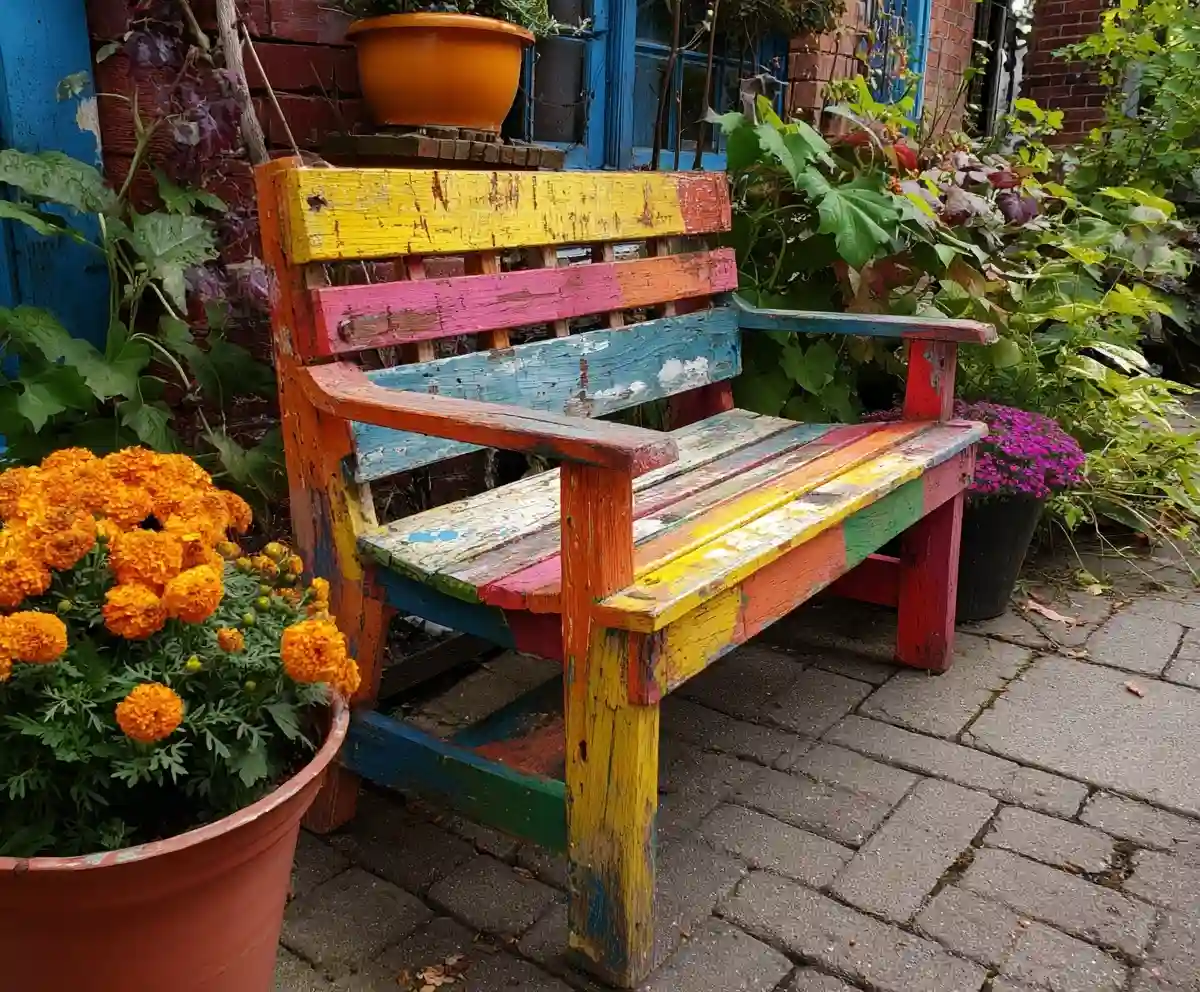
19+ Budget-Friendly Backyard Makeover Ideas
Backyard makeover ideas can turn even the most ordinary outdoor space into a warm, inviting retreat—without draining your wallet.
Read More →
21 Stunning & Simple DIY Clematis Trellis Designs
DIY clematis trellis designs are a beautiful way to blend creativity with function in your garden.
Read More →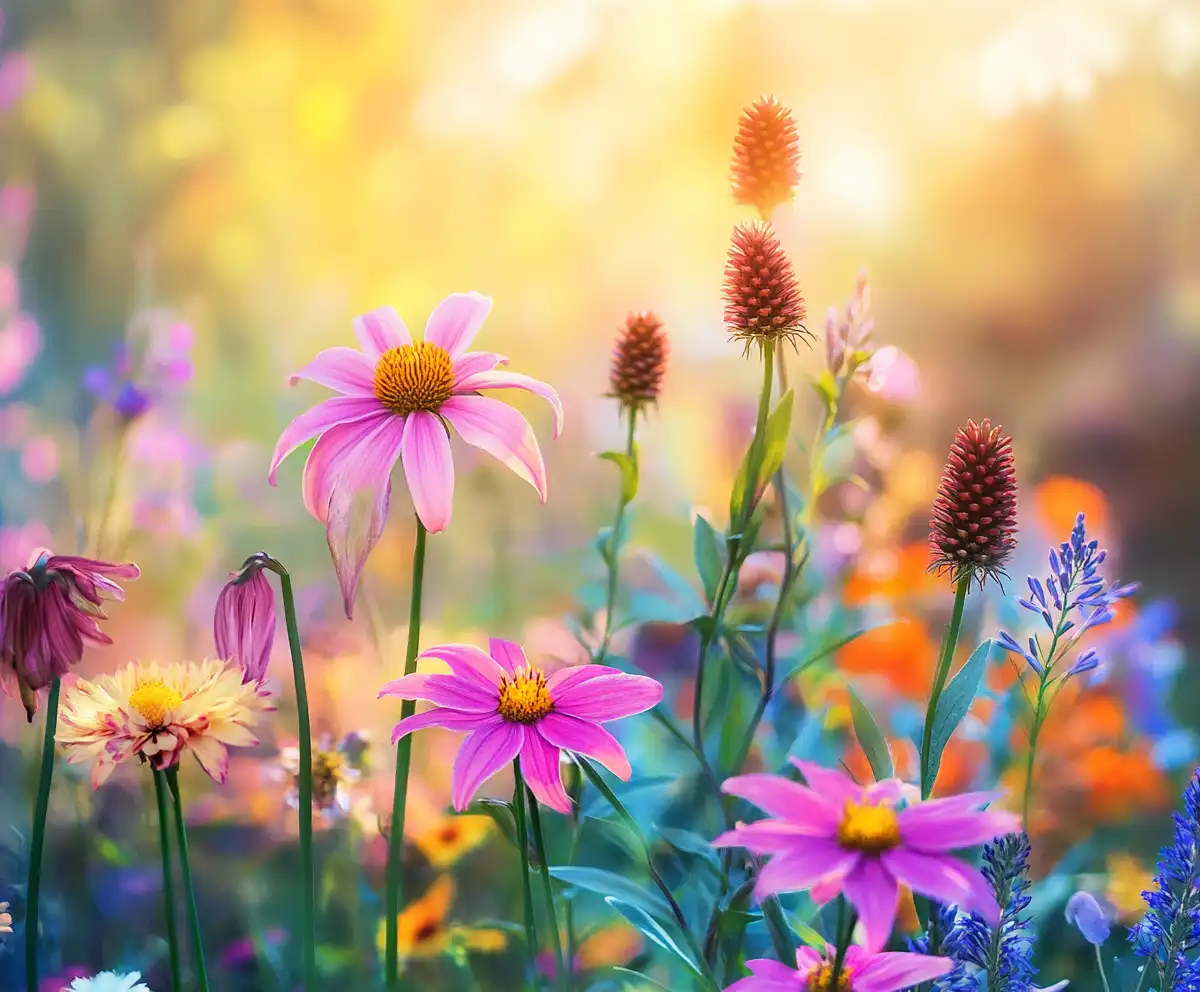
12 Full Sun Perennials That Bloom All Summer
Explore a selection of hardy perennials that flourish and bloom beautifully in full sun throughout the summer.
Read More →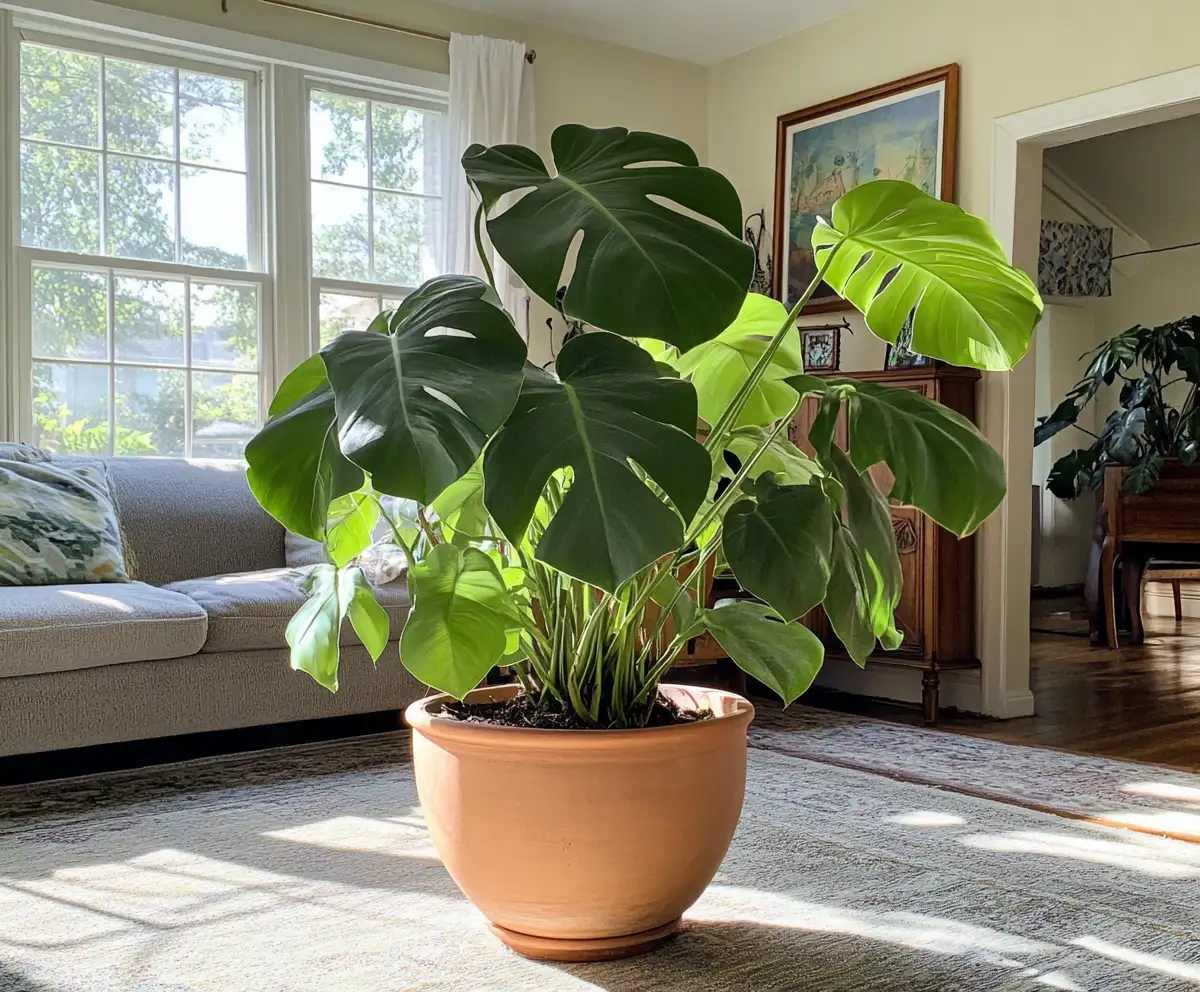
Houseplants for Living Room
Find the perfect houseplants to brighten and purify your living room while adding a touch of nature indoors.
Read More →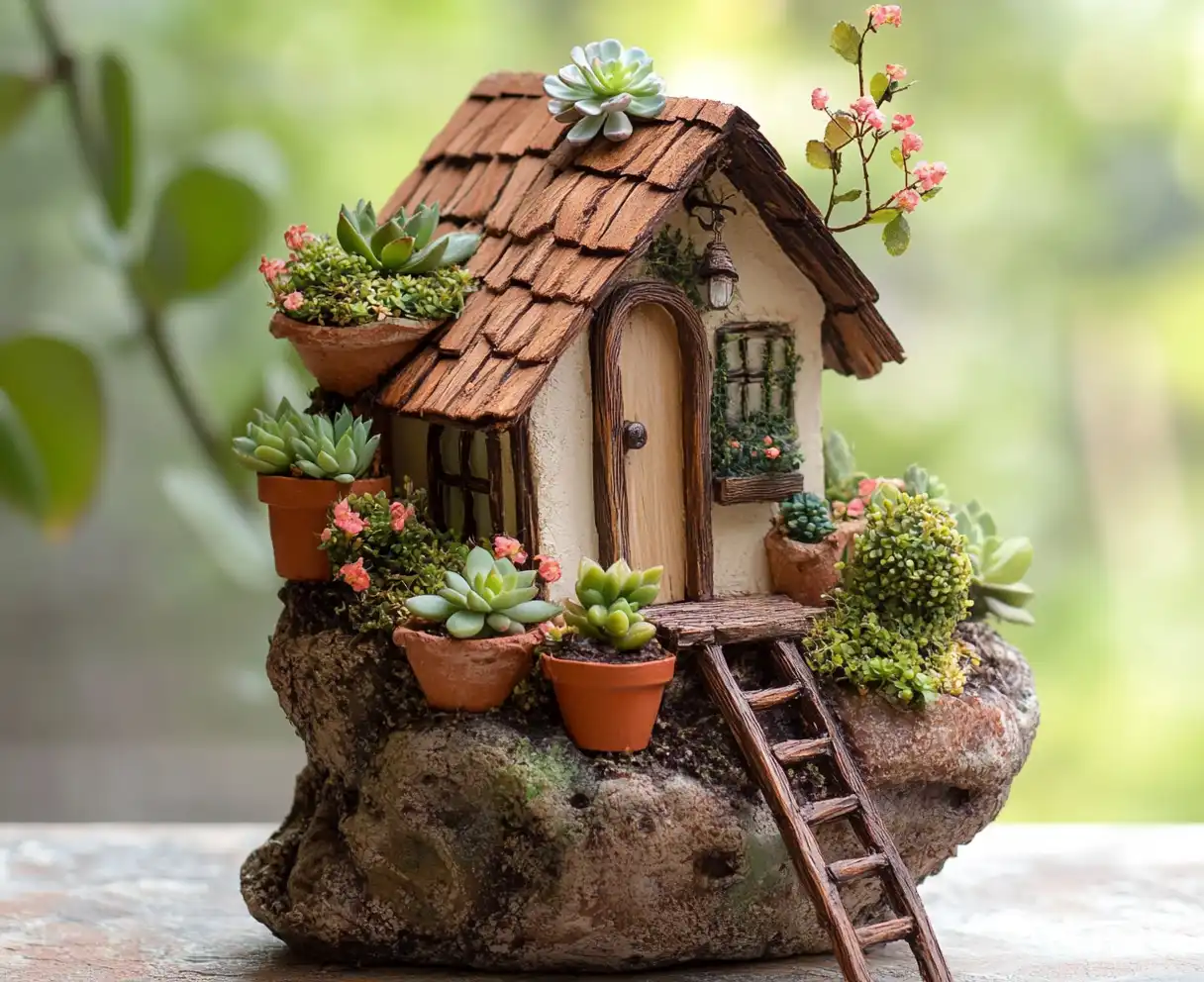
Backyard Play Area for Kids
Create a fun and safe backyard play area for kids with these inspiring design ideas and tips.
Read More →
Top Privacy Trees
Discover top tree varieties that provide natural privacy and enhance your outdoor space.
Read More →

